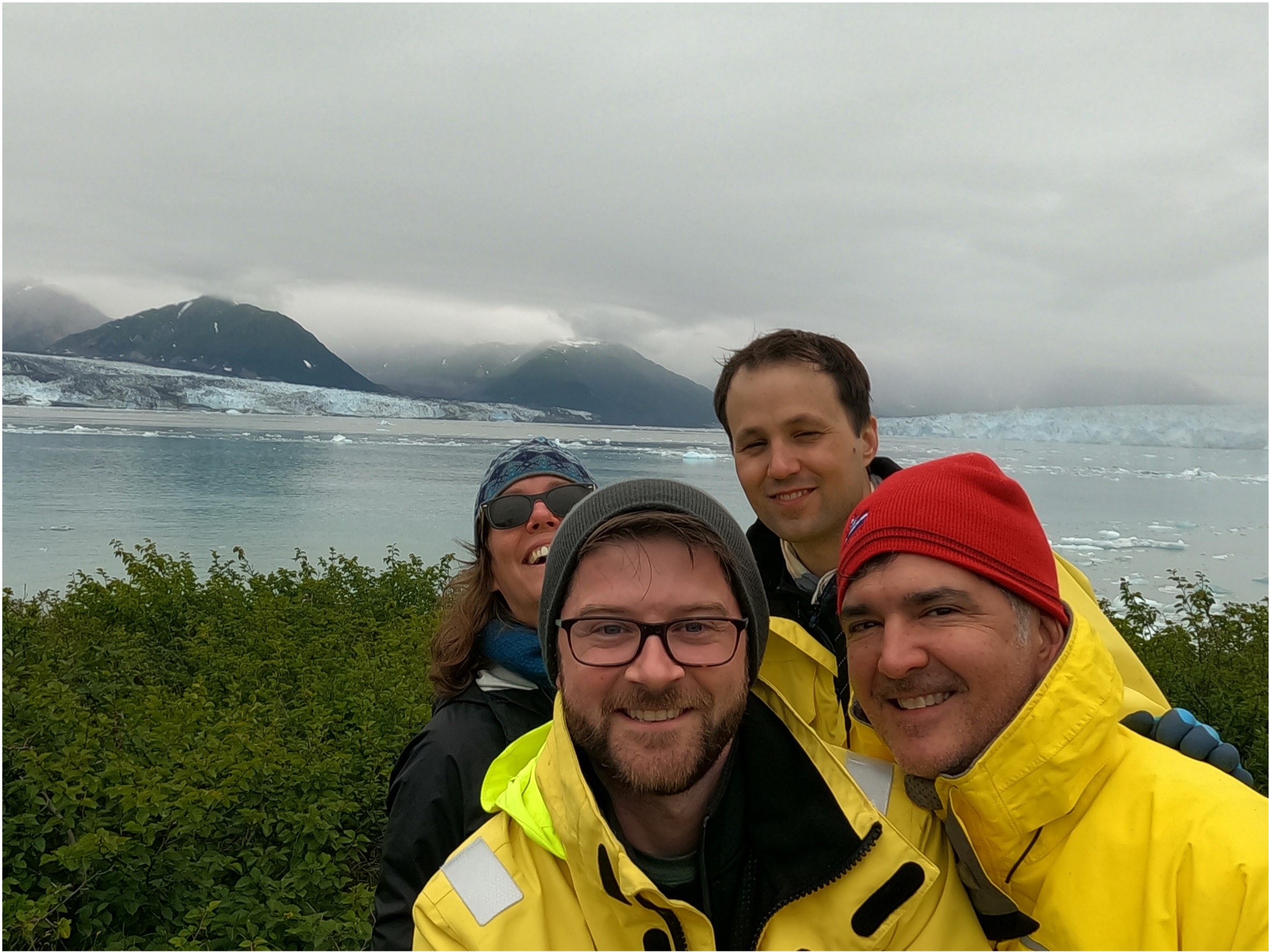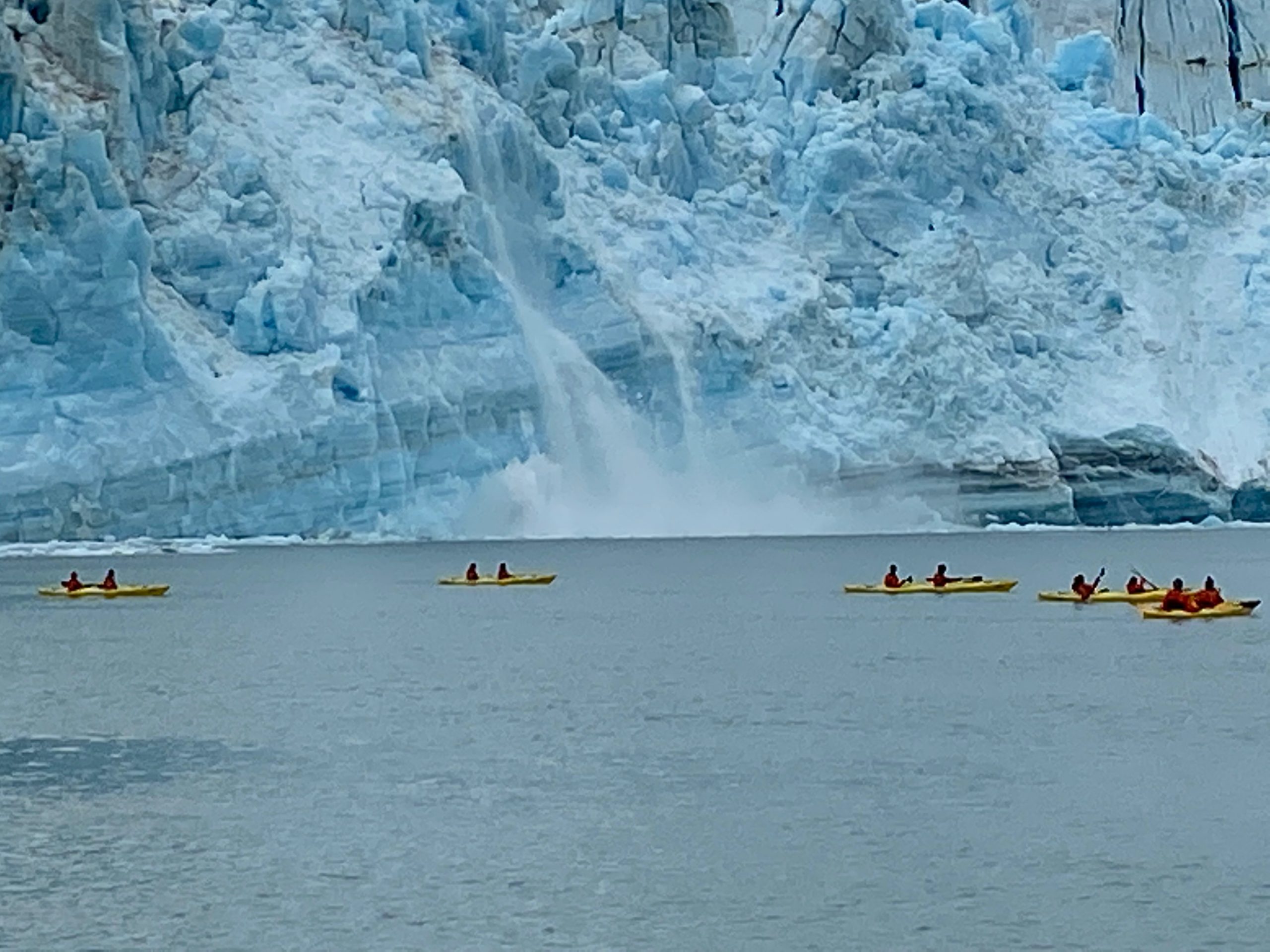September 23, 2022
In August 2022, I was part of a team of UT scientists that traveled to Disenchantment Bay in Alaska to study Turner and Hubbard Glaciers. Read on to find out more about tidewater glaciers, and what we were doing in Alaska and why!
Turner Glacier is of particular interest right now to glaciologists as it is one of the few glaciers worldwide that is advancing. We were based in the fishing village of Yukutat (population 600) from which our team had to travel over an hour by boat each day up to the termini of the ice giants. Our main scientific aims were twofold: 1) to collect data on Turner Glacier as it advanced, and 2) to collect acoustic data from both glaciers to learn more about the soundscape of tidewater glaciers as they stretch, calve, and release sealed air pockets into the bay. Other complementary data, including from Conductivity Temperature Depth (CTD) sensors and tilt sensor , were also collected. This unique approach was the result of a collaboration between UTIG (myself and Marcy Davis, led by Dr. Ginny Catania) and the Applied Research Laboratories (Dr. Matt Zeh and Dr. Colby Cushing, led by Dr. Preston Wilson). Joining me on the trip were Marcy, Colby, and Dr. Wilson, with Dr. Catania and Dr. Zeh providing additional support from the lower 48 states.

After successfully retrieving sensors that had been buoyed underwater for the past 14 months, our team took the opportunity to collect additional data as we watched (and listened to) the glaciers calving, including an up-close discharge event. If you’ve never been near the terminus (face) of a tidewater glacier, there are a couple of things you need to know:

The trip overall was a success, with each member contributing to the data retrieval and recording and everyone acting safely in this harsh environment. I look forward to continuing to work with the team as we listen through over a year of data from below the surface of Disenchantment Bay.